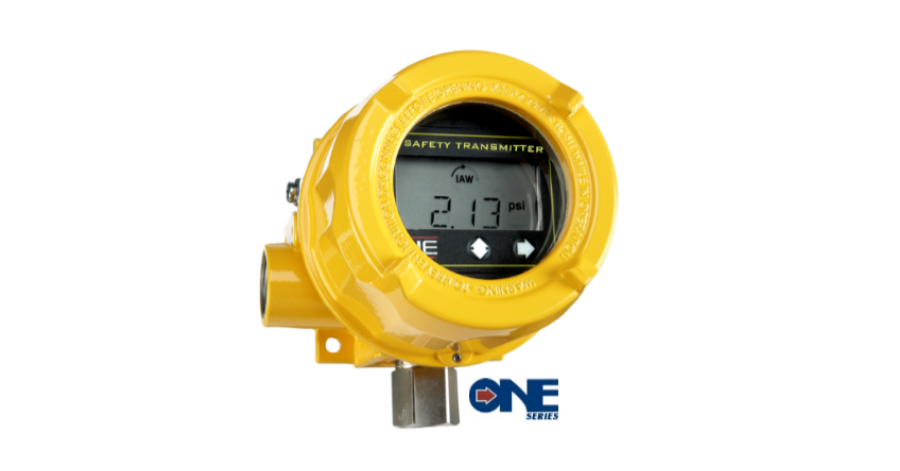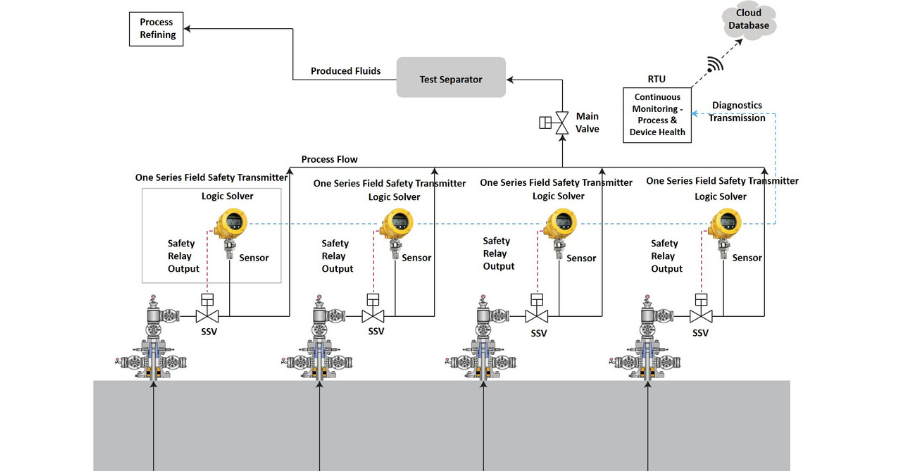Product: One Series™ Field Safety Transmitter
Application: Wellhead Protection
Process: Upstream Oil and Gas Extraction
A worldwide upstream oil and gas company has wellheads feeding test separators to measure oil, gas and byproduct concentrations. To ensure pressure from the flow line to the test separator never exceeds the low and high-pressure setpoints of 75 psi and 640 psi, hydraulic safety shut down systems are installed at each wellhead for fail-safe, and emergency shutdowns (ESD) should abnormal operating conditions occur.
 Challenge:
Challenge:
Four wellheads feed medium API crude to a separator. During extraction, paraffins could coagulate, especially during colder months. This would cause blockages in the individual wellhead’s hydraulic pressure measurement and safety shutdown system, leading to inaccurate pressure measurements and non-closure of the individual wellhead’s safety shutdown valve (SSV). If this abnormal condition were detected at the test separator, the main valve accepting flow from the four wellheads supplying it would fail-safe and shut the entire process, even if other wellheads were operating as designed. Consequently, this would result in significant process downtime, and even potential risk for equipment damage. Labor intensive inspection of the wellheads to determine the problematic one would be required.
Solution:
One Series™ Field Safety Transmitters with the Plugged Port feature enabled were installed on each wellhead. The feature allowed operators to set time and percent of change values for the process, indicating a deviation from normal operating conditions. If pressure-flow were restricted due to blockage, the One Series would initiate a direct, fail-safe shutdown of that wellhead, while the others continued to function. Remotely, operators were alerted to the event when the safety relay failed open, and the 4-20 mA output dropped to 3.6 mA indicating a fault (per NAMUR standards). Locally, the words –plugged port – scrolled across the digital display.
Results:
By utilizing a standalone system per wellhead, the problematic one was easily identified so maintenance turnaround time and downtime were greatly improved. Blocked flow lines were confined to the problematic wellhead and not the entire process. Additionally, reduced system design complexity was realized without changing the host system. The standalone, SIL 2 certified One Series Field Safety Transmitter integrated the sensor, logic solver, and safety relay, eliminating additional components and connections.




